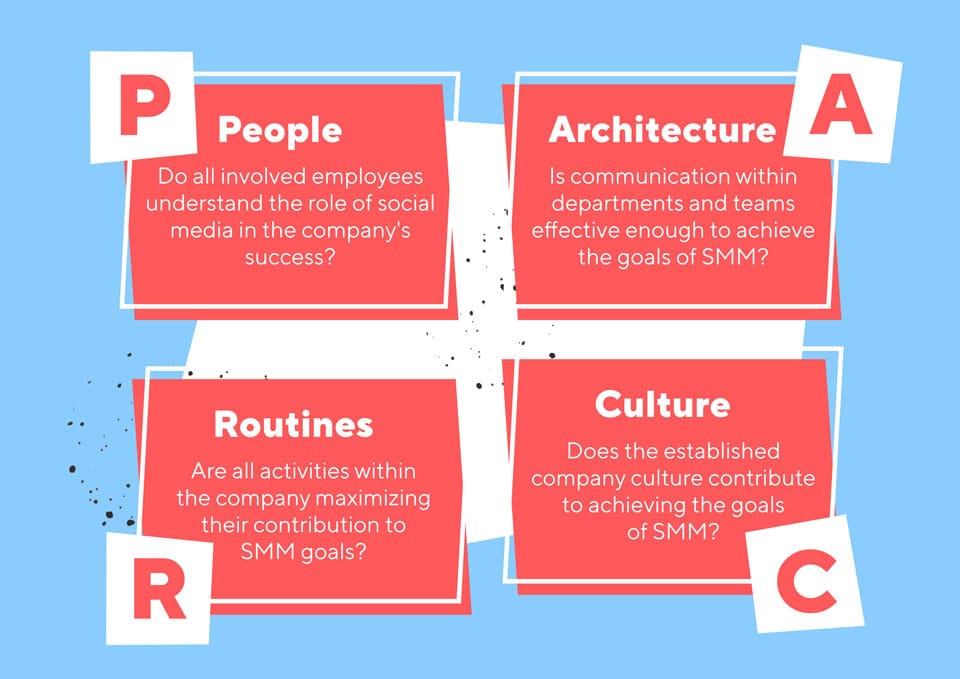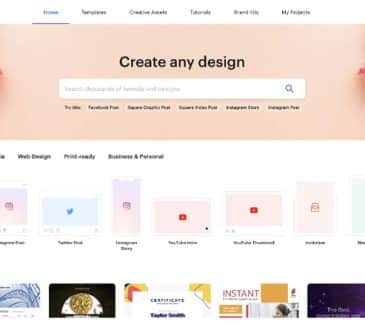Social Media: the game-changing framework that powers winning strategies.

Why do some companies succeed in effortlessly creating and implementing social media strategies, while others only achieve partial success or face failure? As the CEO of my marketing agency KIOSKO for over a decade, with a track record of successfully implementing over 70 strategies, I have observed countless times the situation when a “Company N” aims to stay up-to-date and hires skilled specialists to boost their social media presence. However, within just a month of collaboration, it becomes evident that 50% of the strategy cannot be implemented for various reasons.
The data collection isn’t in place, desired departments or employees cannot be engaged in the process, and important decisions take a long time and prove to be ineffective. Very often, companies are simply not ready to implement new marketing channels such as Social Media and the required technical solutions. This raises a crucial question – how to identify all the weak points at the very start of the social media presence transformation? I continually seek fresh perspectives and innovative approaches to optimize operational efficiency. That’s why I was delighted to discover the PARC framework, which has proven exceptionally valuable in improving the implementation of any social media strategy.
What is the PARC framework?
Initially, the PARC framework (People, Architecture, Routines, Culture = PARC) was introduced by Stanford University as a framework for analyzing company effectiveness from the perspective of organization. The core of the framework is quite simple: it involves evaluating a company and its level of digital transformation in terms of four key elements: People, Architecture, Routines, and Culture. Each element significantly influences the others, creating a synergistic system that operates optimally when all components are at their best.
Later on, marketers adapted it for the structural analysis of a company’s level of its digital transformation. I found it intriguing to examine the challenges of implementing SMM strategies through the prism of this framework, and I was pleasantly surprised by the results. The most convenient aspect of PARC is how rapidly and visually it enables you to not only pinpoint weaknesses in the potential execution of a social media strategy but also to effectively and straightforwardly convey these findings to business owners or management.
In my case, I used a similar approach to assess the readiness for implementing a new SMM strategy. I highly recommend this framework to fellow marketers as a handy tool during discussions with clients to evaluate the actual collaboration opportunities. Furthermore, analyzing a company through the lens of PARC framework can also help business owners, especially small businesses, understand where it’s time to introduce changes. Now, let’s delve into each element in more detail.
People
The main objective of this section is to assess how the company’s employees collectively perceive the importance of utilizing social media as an online marketing channel. I will provide examples of the questions that can help in evaluation of the real potential for the SMM team’s future work:
- Do all involved employees understand and can articulate the impact of the company’s social media efforts on company goals?
- Are all involved departments and employees properly briefed on the necessary actions from their side in the implementation of the SMM strategy?
- Are all involved departments and employees informed about the significance of adopting the SMM strategy and their role in facilitating it?
- Do all involved employees have an understanding of why the company is resorting to a new SMM strategy and what its goals are?
- Do all involved employees show readiness to collaborate and contribute in order to achieve SMM strategy goals?
- To what extent are departments and employees prepared to correctly prioritize their own tasks related to the SMM team’s strategy and complete them within the stipulated timeframes?
Architecture
The primary purpose of this section is to uncover weaknesses in the current decision-making hierarchy and information exchange systems that could impede the implementation of the SMM strategy. Key questions to consider include:
- How is communication facilitated between the SMM team and company employees?
- What is the procedure for endorsing proposals and responding to inquiries from the SMM team?
- What are the shortest and longest timeframes for approving proposals or addressing inquiries from the SMM team?
- To what extent is communication well-established between the SMM team and those responsible for other marketing channels (such as the website, email marketing, PPC advertising, and loyalty programs)?
- Is there a pre-approved event calendar for PR and marketing activities, and is there an opportunity to plan new tasks within the SMM strategy in advance?
Routines
At this point, it’s crucial to comprehend the internal regulations and processes within the company and how they can impact the implementation of the SMM strategy at various stages. Guiding questions for this section include:
- Does the company use any software for efficient management of the accounts? And how long will it take to start to use one if not?
- What teamwork project management tools are used for efficient and swift communication with the SMM team?
- How effectively does the SMM department currently organize the process of collecting and storing data about users or customers?
- Do all involved departments and employees gather data that may be required by the SMM team, and how promptly are they prepared to provide it?
- How is the process of collecting and storing data currently organized in departments whose work is related to the work of the SMM team?
- What percentage of the data necessary for the work of the SMM team is collected today?
- How long will it take to establish the process of collecting all the data necessary for the SMM team to work?
- How secure is the data used by the SMM team?
- Does the company have regulations for the SMM team regarding the time and procedure for processing feedback from users?
- Are there any other regulations regarding processes that are interconnected with the SMM strategy?
Culture
Here, we come to what I consider the most crucial element – the company’s internal culture. How it perceives itself and positions itself in the realm of social networks, to what extent it desires to be flexible, forward-thinking, and distinctively stand out among competitors. For example, in the digital context, a customer-first culture or an innovation-first culture can help employees figure out how to present themselves, their products, and their organization to customers in the context of social media when faced with non-routine situations. The answers to the following questions will assist the company in developing and adapting its SMM strategy to reflect its cultural values while effectively engaging with customers on social media:
- What kind of culture exists within the organization, and what values and principles does it encompass?
- How does the organization see itself and how does it wish to be perceived by customers through the prism of social networks?
- Is the company actively encouraging employees to serve as social media ambassadors?
- What existing processes and regulations might hinder employees in addressing unconventional situations on social media?
- What patterns of behavior and recommendations can be provided to members of the SMM team to enable them to better align with the organization’s culture when interacting with customers on social media?
- What values and priorities are significant to the company’s customers, and how can they be integrated into the SMM strategy?
- What actions and decisions in social media would best harmonize with the organization’s culture while simultaneously satisfying the customers’ needs?
In the constantly changing landscape of digital marketing, the PARC framework serves as a guiding light, illuminating the path to success in the realm of social media marketing. It reminds us that the heart of any strategy lies within the people who drive it, the architecture that supports it, the routines that fuel it, and the culture that defines it. As we navigate this dynamic digital world, it’s essential to remember that every company, big or small, has the potential to excel in the social media space. By evaluating our people, refining our architecture, streamlining our routines, and nurturing our culture, we can create engaging, impactful, and transformative digital experiences.
——–
Written by Daria Shishlyannikova.
Have you read?
23 of the Biggest Wars in Human History.
Movies that Catapulted Hollywood Icons.
Countries with the Most American Military Bases.
Countries With The Most Main Battle Tanks Today.
Silver Screen Disasters: Epic Failures in Hollywood.
Add CEOWORLD magazine to your Google News feed.
Follow CEOWORLD magazine headlines on: Google News, LinkedIn, Twitter, and Facebook.
This report/news/ranking/statistics has been prepared only for general guidance on matters of interest and does not constitute professional advice. You should not act upon the information contained in this publication without obtaining specific professional advice. No representation or warranty (express or implied) is given as to the accuracy or completeness of the information contained in this publication, and, to the extent permitted by law, CEOWORLD magazine does not accept or assume any liability, responsibility or duty of care for any consequences of you or anyone else acting, or refraining to act, in reliance on the information contained in this publication or for any decision based on it.
Copyright 2024 The CEOWORLD magazine. All rights reserved. This material (and any extract from it) must not be copied, redistributed or placed on any website, without CEOWORLD magazine' prior written consent. For media queries, please contact: info@ceoworld.biz
SUBSCRIBE NEWSLETTER










